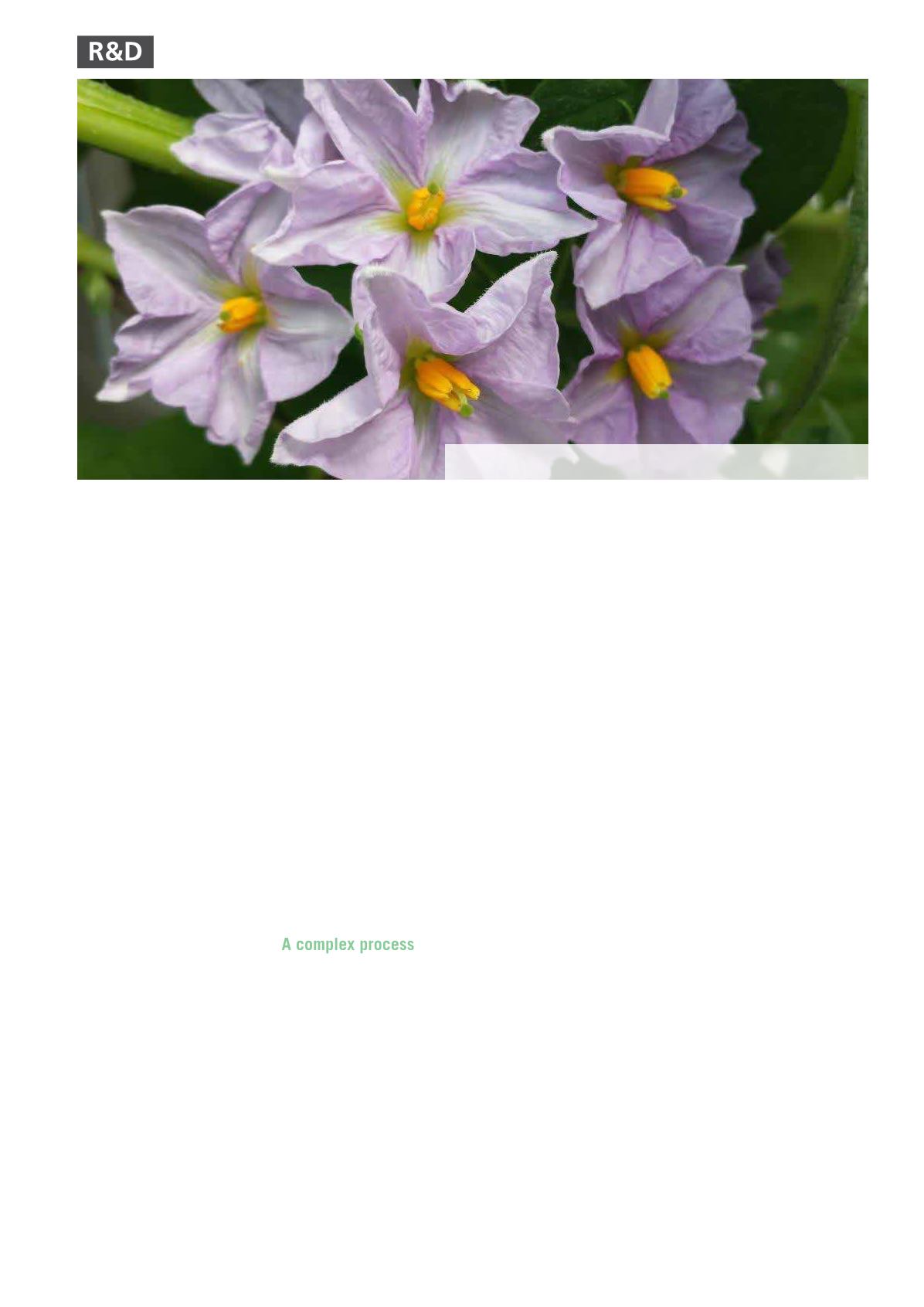

18
Mini-tuber production:
The science behind the process
IN THIS EDITION OF
POTATOES AUSTRALIA
, WE ENTER THE WORLD OF MINI-TUBERS.
THREE OF AUSTRALIA’S LEADING MINI-TUBER PRODUCERS OUTLINE HOW THEIR
SERVICES WORK AND DISCUSS THE IMPORTANCE OF DEVELOPING DISEASE-FREE MINI-
TUBERS FOR THE POTATO INDUSTRY.
Liteisha Lochert said that
the mini-tuber growth cycle
commences in the laboratory,
where a potato tissue culture
plantlet is cut into multiple
pieces and placed into agar
(a jelly-like substance obtained
from algae) to develop a
rooting and shooting system;
finally producing a cultured
potato plantlet.
“It takes 21 days for that plant
to become tall enough so we
can repeat the same process
on it. That’s how we multiply
the volume of plants that we
require,” Ms Lochert said.
“Established plantlets are
then transferred from the agar
growth medium to seed raising
trays to harden off for a further
10 days, after which these
plants are planted to larger
production pots to grow and
develop tubers. After 70 days
the plant tops are removed and
the tubers harvested.
“It takes another 10 days in
the tray and then it goes out
into the pot for another 70
days. If you follow one plant
through the system, from the
day it was first cut, you’d be
looking at around 100 days to
get that one mini-tuber.”
ViCSPA General Manager Dr
Nigel Crump said Toolangi Elite’s
tissue culture collection of both
public and private varieties forms
the initial stage of the mini-tuber
production process.
“We maintain that collection
in high health condition – it’s all
pathogen-tested material, and
we have a team of specialist
tissue culture technicians who
will multiply that up to where it
needs to be based on requests
and orders. From there, we
grow them in our insect-proof
polytunnels and we generally do
two crops a year. We also supply
other laboratories that produce
mini-tubers with tissue culture as
initial stocks or material for their
planting,” Dr Crump said.
M
ini-tuber production is a
detailed and meticulous
process that is the backbone of
the Australian potato industry,
and there is an intricate science
behind the process.
Toolangi Elite, Solan and
Agronico are the biggest
operators of the country’s eight
accredited mini-tuber producers.
Since 2010, ViCSPA has been
running Toolangi Elite in Victoria,
which is known to many as
the birthplace of potato tissue
culture in Australia and where
approximately 50 per cent of the
country’s potatoes start their life.
Solan, owned by Ken Morley
and his wife Deborah, is a
South Australian business
that was established 25 years
ago. Mr Morley was a potato
grower consultant who quickly
discovered the requirement for
clean seed in the industry and
Solan now holds 35 public and
300 private varieties.
Agronico, established by Julian
Shaw in 1985, is a Tasmanian-
based agricultural service
provider that has developed a
mini-tuber production system
that uses hydroponics rather
than a pot-based system, with
much success.
Mini-tuber potato production
underpins the production
of certified seed potatoes in
Australia, and ultimately the
commercial production of high
yielding potato crops. The
technology used ensures a
constant supply of pathogen-
tested mini-tuber stocks can
be produced to supply seed
producers for further field
multiplication. Tissue culture
technology is used in other
commodities as it enables the
rapid build-up of plant material
to give commercial volumes of
plant material.
Solan Business Manager
Toolangi Elite, Solan and Agronico are the biggest operators of the country’s
eight accredited mini-tuber producers. Image courtesy of Agronico.
Mini-tuber production

















